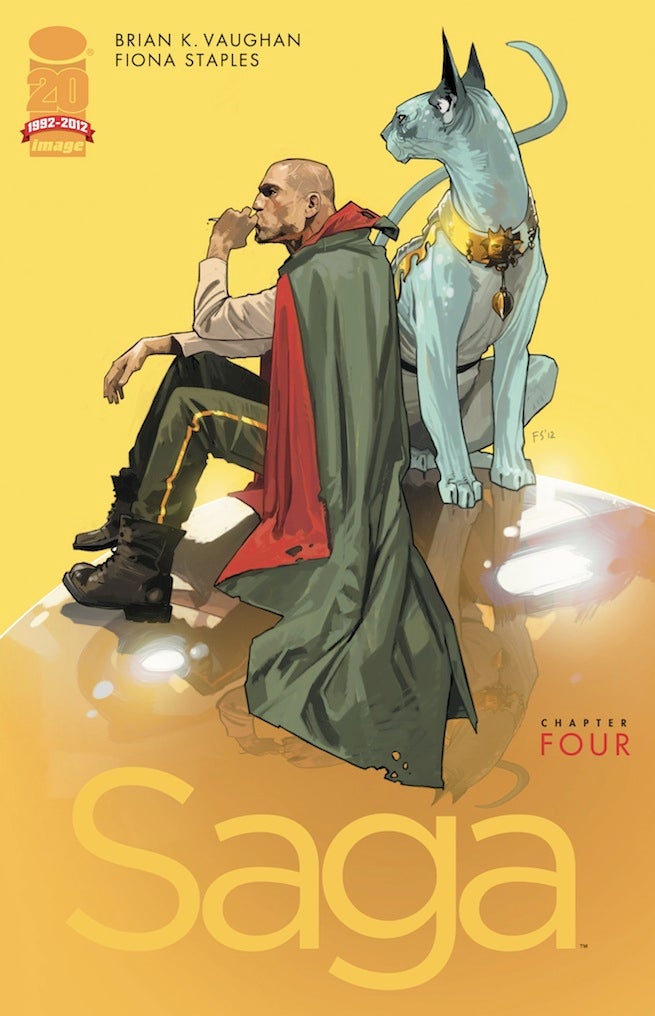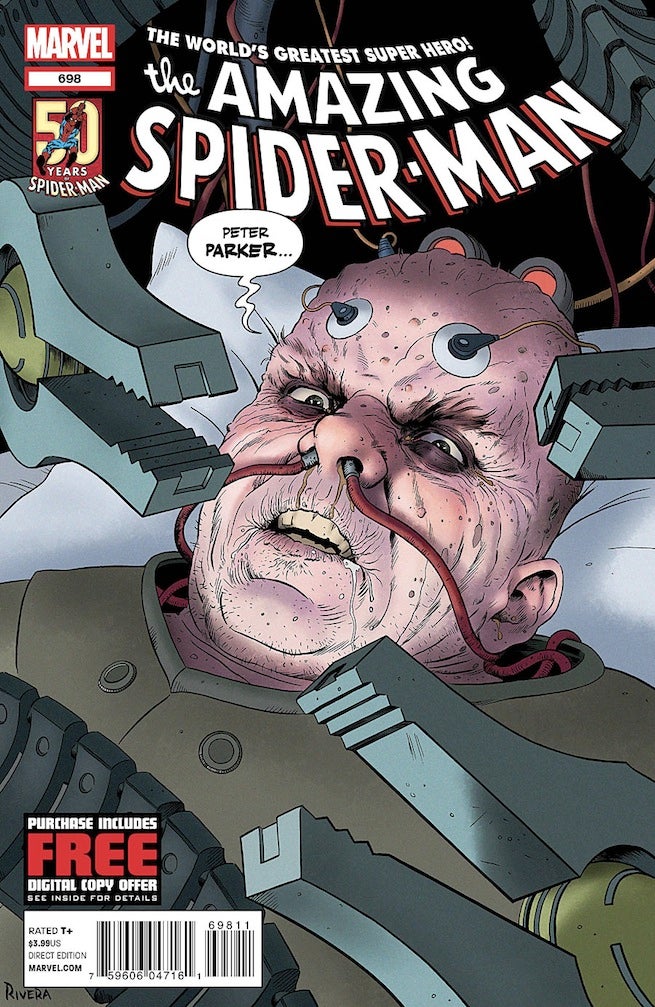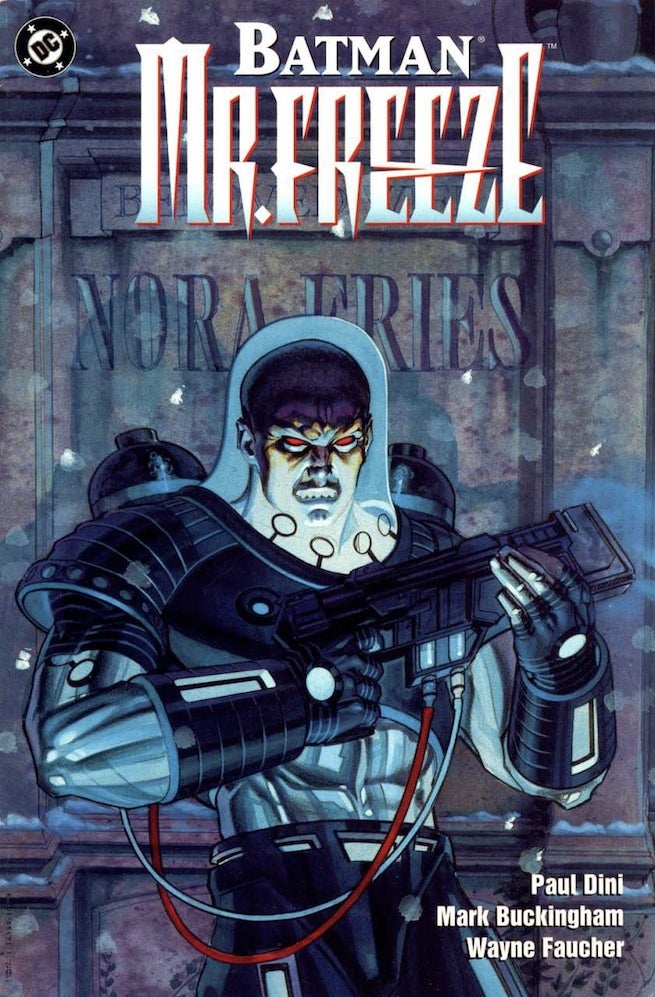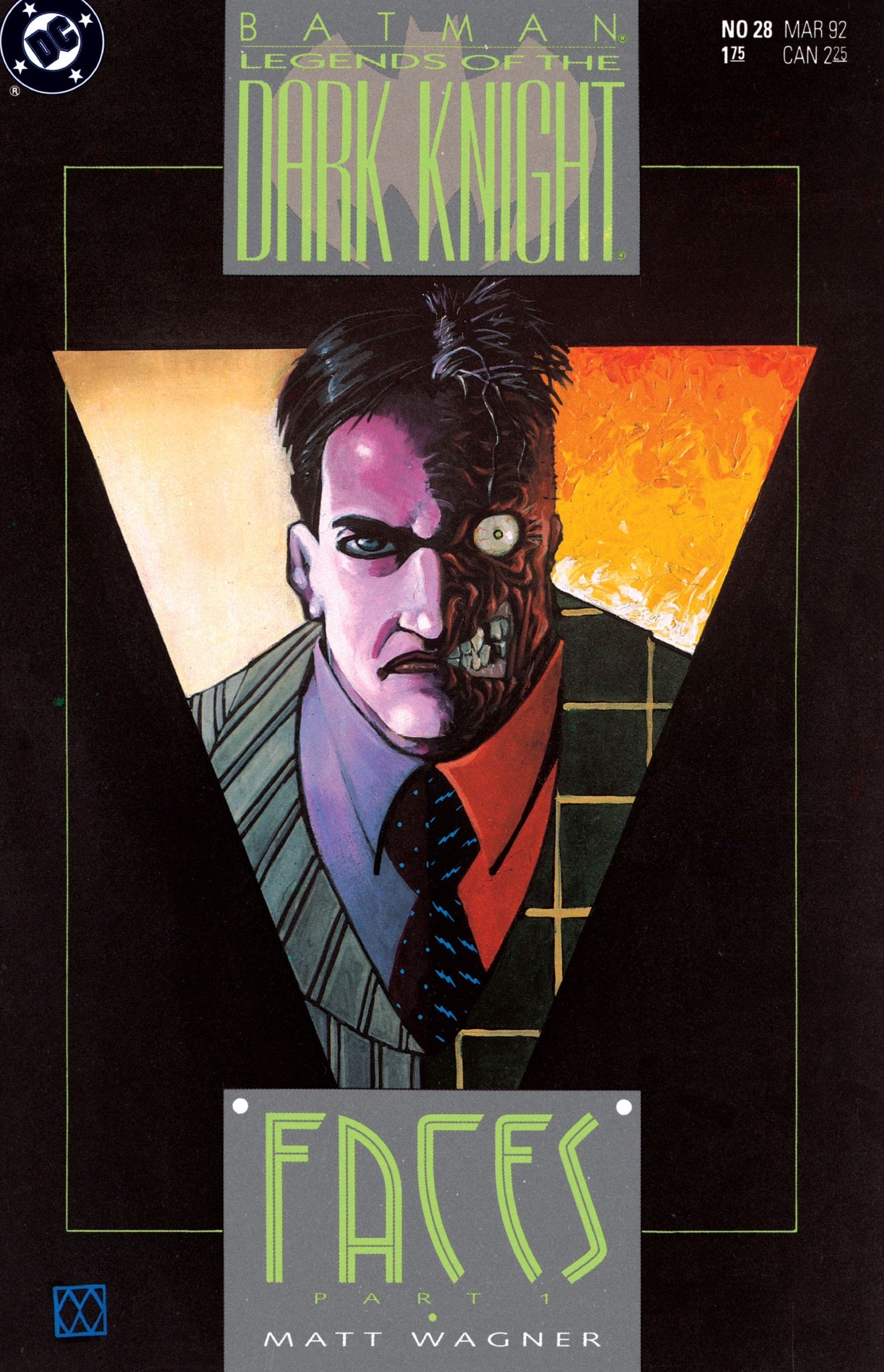10 Sympathetic Comic Book Villains
Earlier this month, Marvel published the first issue of its all-new Darth Vader series – a book [...]

Earlier this month, Marvel published the first issue of its all-new Darth Vader series – a book that will tell its story from the perspective of one of pop culture's richest, most complex villains. Fans of the Star Wars movie-verse understand that Vader is not just some dime-a-dozen lunatic, who senselessly murders and conquers other worlds, all in the name of chaos. There's a reason to his rhyme, and his precipitous fall from glory (as depicted in Star Wars Episodes I-III) makes him one of the more sympathetic bad guys out there.
With that in mind, we thought we'd spotlight 10 more sympathetic villains from comics. These are guys who might initially appear to be the epitome of evil, but eventually reveal themselves to be far more emotionally complicated. Perhaps it's hard to forgive the actions of some of the characters on this list, but once their backstories and motivations reveal themselves, it might be hard to outright dismiss them as black and white exhibitions of villainy.

10. Harry Osborn
Harry Osborn, son of wealthy industrialist/master of the universe Norman Osborn was first introduced in the world of Spider-Man comics as the college-aged friend of Peter Parker. There was naturally some inherent drama to that friendship when it was eventually revealed that Harry's father was gliding around Manhattan as the supervillain the Green Goblin. Still, there was nothing to suggest that Harry would ever follow in his father's footsteps, even when the character fell into drugs (as part of the famous "No Comics Code" issues of Amazing Spider-Man in the early 1970s).
That all changed when Norman died in battle with Spider-Man and Harry later finds Peter's spare Spidey costume in one of his drawers in their apartment. Harry has a huge mental breakdown and soon finds himself donning the purple gloves and the green costume in an attempt to torment Spider-Man. Spidey beats the sense back into Harry, but the character would fall back into supervillainy in the early 90s after suffering another breakdown. While many of the Spider-Man/Harry-Goblin stories rank as some of the best Spidey tales, it was always difficult watching these two best friends engage in fisticuffs. Harry's death in Spectacular Spider-Man #200 is especially poignant, considering how he sacrifices himself to rescue Peter (despite the fact that he initially traps his buddy in a building rigged to explode).

9. Wilson Fisk
Years before Tony Soprano was capturing the hearts and minds of television viewers as a cruel, but also sympathetic mob boss, Marvel had Wilson Fisk, aka the "Kingpin" of its criminal underworld. A villain who can easily boast to being a prime adversary to three different heroes (Spider-Man, Daredevil and Punisher), Fisk is also shockingly complex and nuanced. There's more to this mountain of man than meets the eye.
Fisk actually quits the crime game at the request of his wife during an arc in Amazing Spider-Man in the 1970s but like Michael Corleone quickly understands that no one is ever truly "out" in the mob. He gets pulled back after the apparent death of his wife during Frank Miller's iconic run on Daredevil.
Kingpin is obsessed with destroying his enemies, but it's hard to completely vilify a character whose heart has gone cold due to the perceived loss of love. Kingpin's psyche is further complicated when during Miller's Daredevil: Love and War graphic novel, Kingpin kidnaps a therapist to work with his wife (who ends up being alive) only to learn he cannot connect with his wife again after her injuries. The final panel of Love and War, which shows a despondent and alone Kingpin is absolutely devastating, regardless of the number of people Fisk has killed over the years.

8. The Will
This supporting character from Image's epic fantasy series Saga, wouldn't be the first bounty hunter that found a way to charm and disarm audiences despite his roguish tendencies, but he's certainly one of the best "mercenaries with a heart of gold" in comics.
When the character is first introduced, he's attempting to hunt down and kill Saga's two main protagonists, Marko and Alana, and capture their infant daughter, Hazel. While The Will's tactics appear to be brutal and merciless, he does have a very defined moral code and doesn't take lightly to those who take advantage of the defenseless – especially young children. He spends an exorbitant amount of money to rescue a girl who was being used as a slave on the planet Sextillion. Also, how could someone who has the amazing Lying Cat as a pet/companion be all bad?

7. Captain Cold
No, this is not an appeal to sympathize with this famous Flash rogue because someone thought it was a good idea to name him Leonard Snart. Rather, this has to do with one specific story that portrayed Captain Cold in a whole new light – a sympathetic one at that. In Flash (vol. 2) #182, Geoff Johns scripts a moving tale where Snart admits to being a cheat and a thief, but explains that he only kills in a "kill-or-be-killed" scenario. Additionally, he talks about the abuse he and his sister took from their drunkard father when they were kids. Snart's happiest moments revolved around spending time with his sister (who would join him on the crime front under the name Golden Glider), or spending time with their grandfather (who owned an ice cream truck and sparked Leonard's curiosity into all things cold). When Golden Glider is killed by the villain Chillblaine, any remaining warmth in Leonard's heart died too, leaving him at "absolute zero" (also the name of the story).
If there's anyone out there who reads this beautifully constructed comic and doesn't feel at least a pang of sympathy for Snart, then that person's heart is probably frozen at absolute zero as well.

The brilliant but egomaniacal Otto Octavius spent years trying to figure out a way to conquer his longtime adversary Spider-Man before finally succeeding in switching minds and bodies with the Wall Crawler just as he was on the very of dying from cancer. Peter Parker's "death" in Amazing Spider-Man #700 launched the Superior Spider-Man era for Marvel, where Otto, as Spidey, attempts to honor the "with great power there must also come great responsibility" mantra in his own twisted way, even if it means killing a villain (which Peter would never do).
But a funny thing happens as Superior Spider-Man unfolds. This twisted, dark superhero story actually becomes a pseudo-redemption arc for Otto – a man who has tried to conquer the world countless times. Throughout Superior, the reader learns of Otto's complicated past, which includes being physically abused by his father and emotionally abused by his overprotective mother. Then, as Spider-Man, Otto finds love and starts to adjust his methods, making him resemble a more traditional hero. After relinquishing his body back to Peter, a past iteration of Otto has returned in the current "Spider-Verse" arc. It hasn't all been sunshine and roses, but after his stint as the Superior Spider-Man, it's hard to ever regard Otto as a villain again.

5. Mr. Freeze
Years before the character was Schwarzenegger-ed into being a punchline ("Chill!") on the big screen, Dr. Victor Fries, better known as Mr. Freeze, was, and continues to be, one of the most emotionally complex of all of Batman's rogues. After first being introduced during the Silver Age, the character was significantly revamped as part of the DC's massive post-Crisis on the Infinite Earths makeover. In this iteration, Freeze is a brilliant molecular biologist who earns the ire of his parents when he was caught freezing animals. He is shipped out to a boarding school, which made him miserable and isolated. Still, he meets the love of his life, Nora, in college and marries her.
But love alone can not save Freeze. Early in Batman's career, Nora takes ill and Freeze starts developing technology to cryogenically freeze her. While conducting his experiment, it backfires and Nora is killed. Freeze himself is critically injured in the explosion and needs to wear a cryogenic suit because of his abnormally low body temperatures. From that point on, Freeze swears revenge on all of those who blames for Nora's death, including, eventually Batman. Doesn't change the fact that his story hits you right in the feels if you ignore all of the senseless crime and murder that he commits.

4. The Lizard
The Marvel Universe is filled with Dr. Jekyll/Mister Hyde analogues – characters who are inherently good but are transformed into evil monsters thanks to an experiment gone awry – but Curt Connors and his alter ego, Lizard is probably the best example of this trope. Connors is a brilliant scientist who changes into a cold blooded villain after injecting himself with lizard DNA in an attempt to regenerate his missing arm. Sadly, as the Lizard, Connors always ends up targeting his wife and young son, forcing Spider-Man out to save the day.
Spidey has long had a difficult time fighting the Lizard because he knows underneath the green scaly exterior, there's a good man who just made a bad decision with an experiment. More heartbreak for the character comes during the "Brand New Day" era of stories, when, as the Lizard, Connors finally succeeds in killing his child, Billy – a tragedy he (or Spider-Man) can't seem to forgive him for. All the same, it's hard to judge Connors too harshly for the sins he commits as Lizard.

3. Two-Face
Harvey Dent's fall from grace is one of the most tragic character turns in comic book history. A virtuously proud district attorney, Dent worked arm-in-arm with Gotham City police commissioner Jim Gordon and Batman to take on all of the city's crime families, demonstrating that no institution, no matter how corrupt, was beyond saving. But as time passed, some of Dent's deeply-set neuroses sabotaged him. He became obsessive and paranoid as evidenced in flashback stories like Batman: The Long Halloween. Then, he finally snapped after a mobster threw acid in his face during a trial (transforming him into the criminal mastermind known as Two-Face).
Even without the tragic backstory, the Two-Face character – when written by certain creators – has long been an insightful study in duality, making him enormously complex. When you consider the person Dent was before his disfiguration, he's a character that elicits a tremendous amount of sympathy from the reader.

2. Doctor Doom
Marvel's man in the iron mask has certainly tried to take over the world countless times and doesn't have an exemplary record when it comes to ruling the fictitious nation of Latveria with an iron fist, but Victor Von Doom has a bit of a tortured backstory that makes a lot of misbehavior at least a tad bit understandable. As a young boy, Doom's mother, a sorceress, was killed and her soul taken by Mephisto. When Victor's father is accused of murder, he later dies, leaving Doom in the care of a band of gypsies, where the child would eventually develop his thirst for vengeance. Doom's famous armor and mask came forth from an experiment gone awry. While working on a machine to help him communicate with his deceased mother, Victor made a mistake in his calculations, leading to the explosion that severely scarred his face.
While one could justifiably criticize Doom for wanting to speak with the dead, considering how his primary goal was to reach his mother, there's something inherently cruel about that being the experiment that essentially led to the creation of Doctor Doom. In the years that followed, Doom chiefly served as an antagonist to the heroes of the Marvel Universe. But there have been a fair number of stories where he's tapdanced on the line separating evil and good. In the fantastic Doctor Doom/Doctor Strange: Torment and Triumph graphic novel, Doom teams-up with Doctor Strange to rescues his mother's soul from Mephisto and even rescues the good doctor from the demonic villain (just don't expect him to admit to being noble).

1. Magneto
When the "Master of Magnetism" was first introduced in Uncanny X-Men #1, he was portrayed as a violent ideologue who saw mutantkind as being superior to mankind. Even if Magneto ultimately had a point in what he preached – that mutants should not be prejudiced against by humans – his saber rattling and violent threats made the character look purely evil, especially when compared to the more peaceful methodology practiced by Charles Xavier, leader of the X-Men.
But as time went on and facets of Magneto's biography became known, the character was suddenly fleshed out with a shocking amount of depth and nuance. We learned that he and his Jewish family were imprisoned in the Warsaw Ghetto by the Nazis during World War II, and his parents were later killed. Magneto only escaped death because of the manifestation of his powers. That's enough pain and torture to make anyone a bit militant in defending their brethren. On top of that, Magneto has also made numerous attempts to redeem himself since he first burst upon the scene. He even led Xavier's New Mutants school for a period of time. Sure, he always finds a way to fall back into bad habits, but you can't dismiss Magneto as a pure bad guy.
0comments